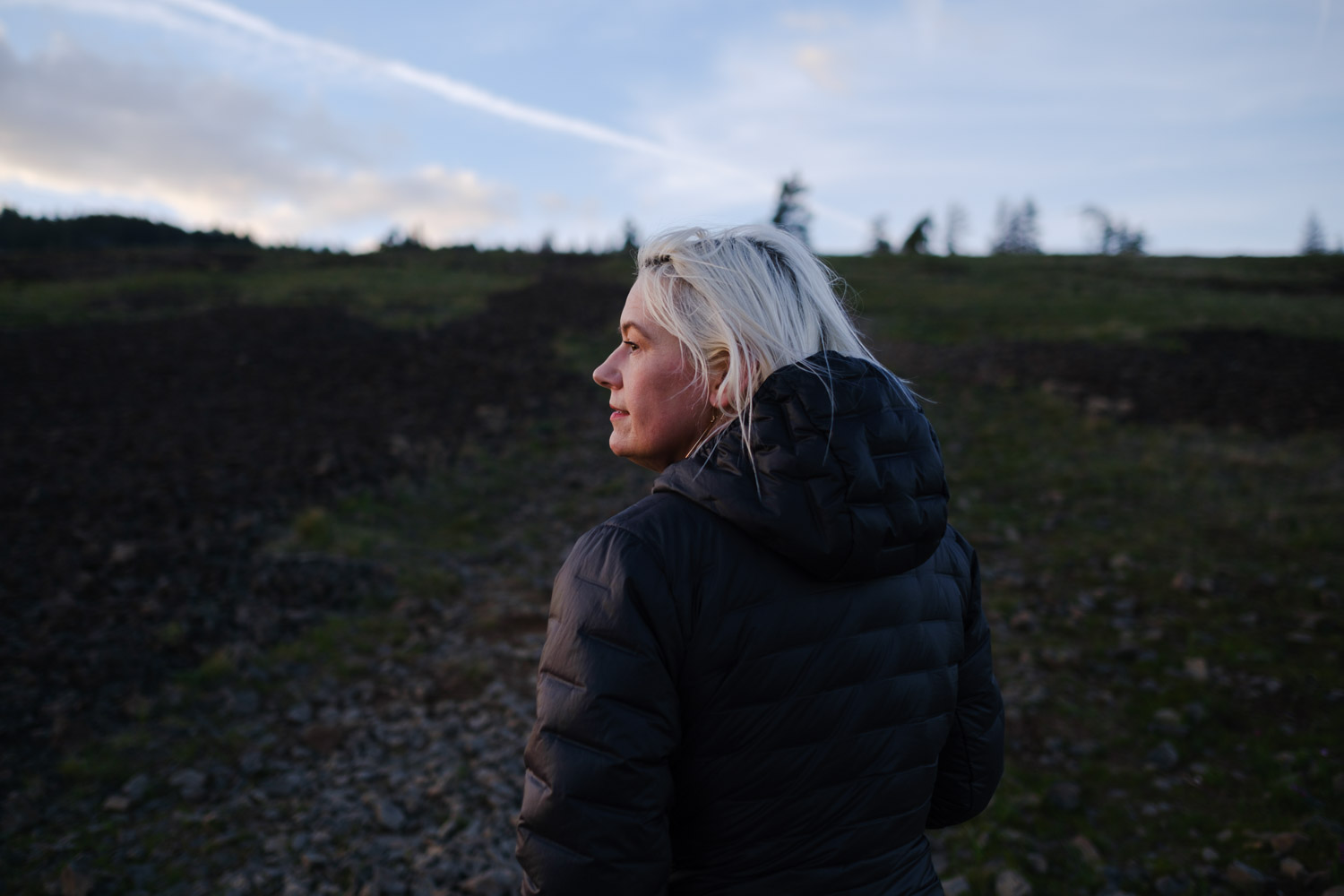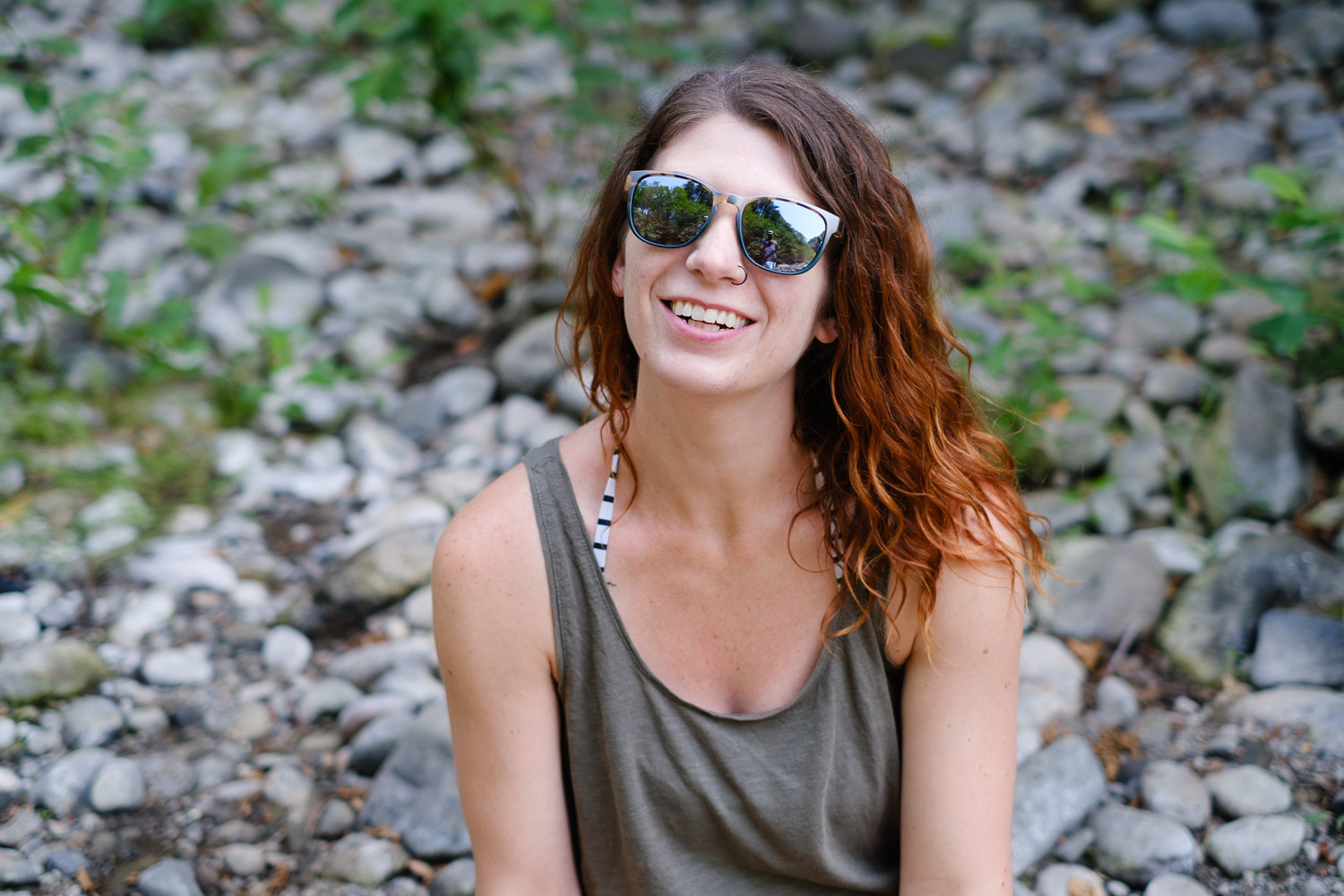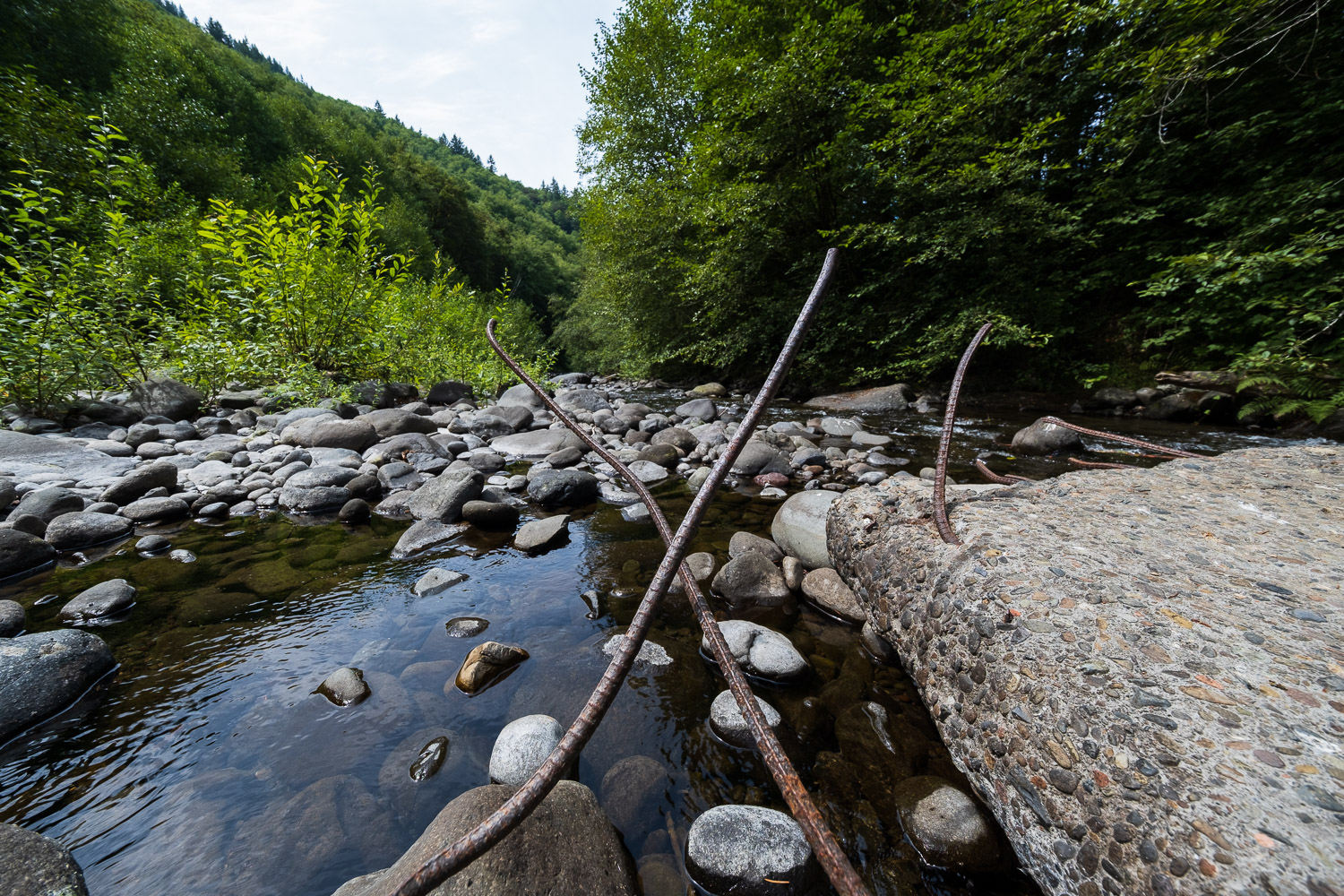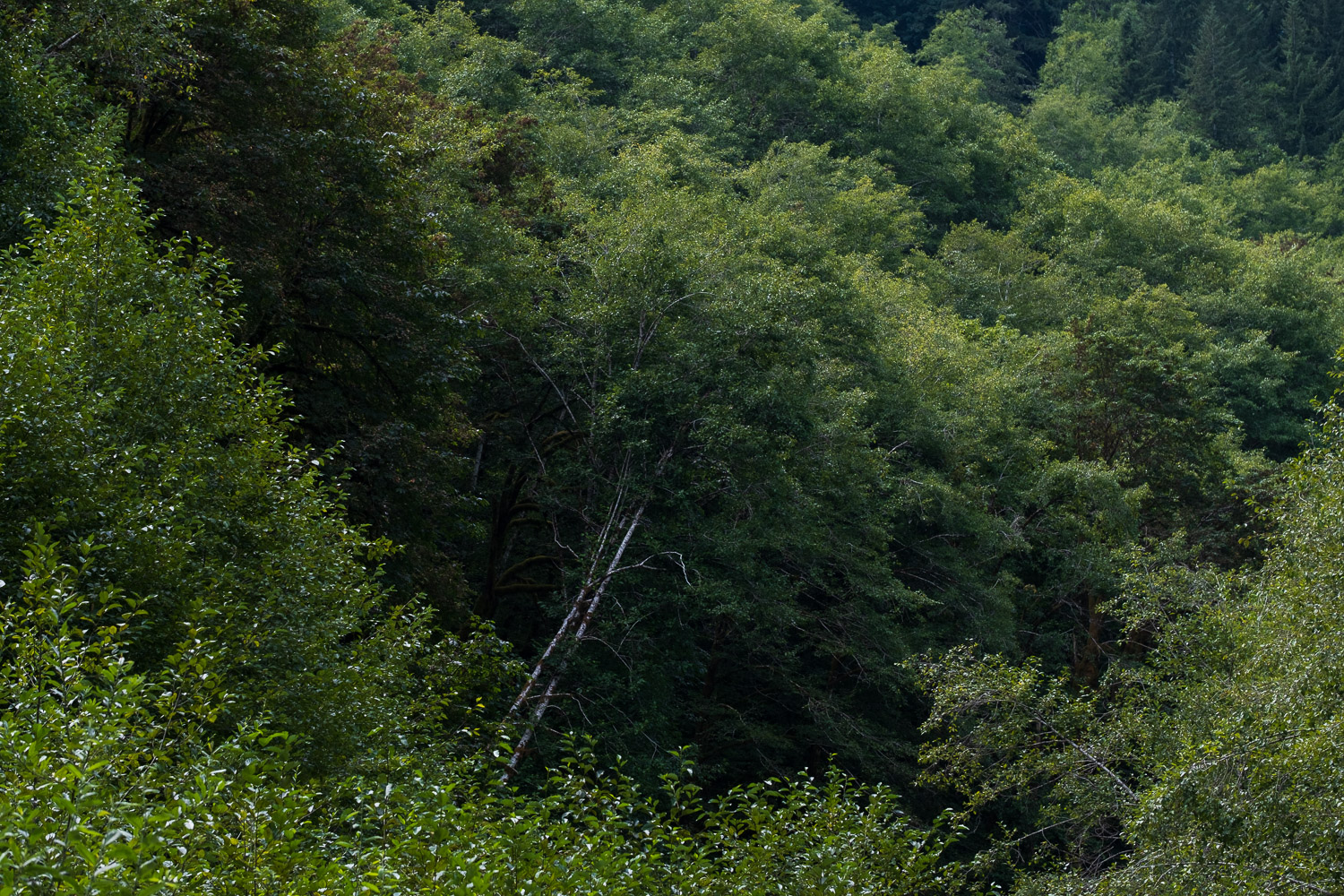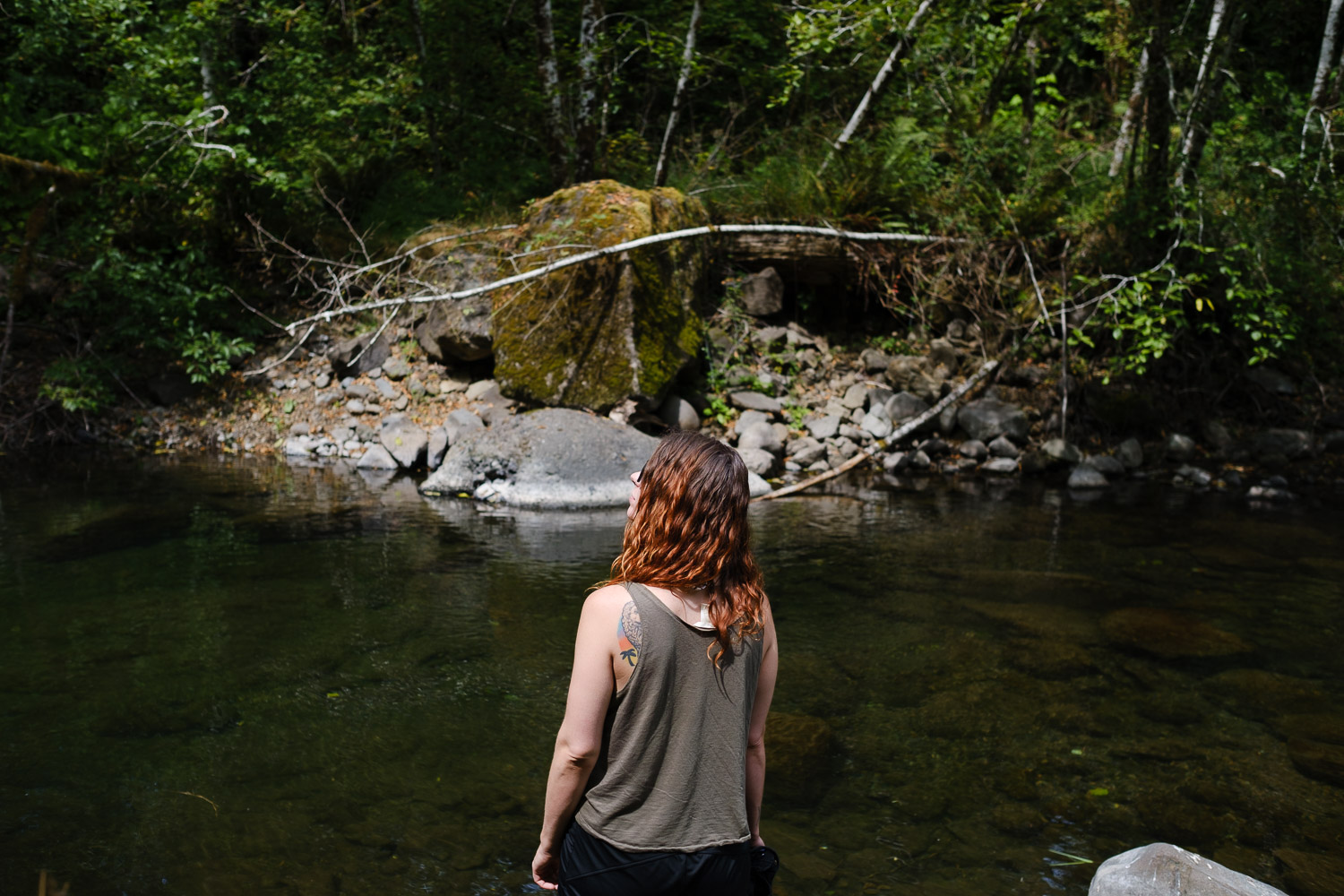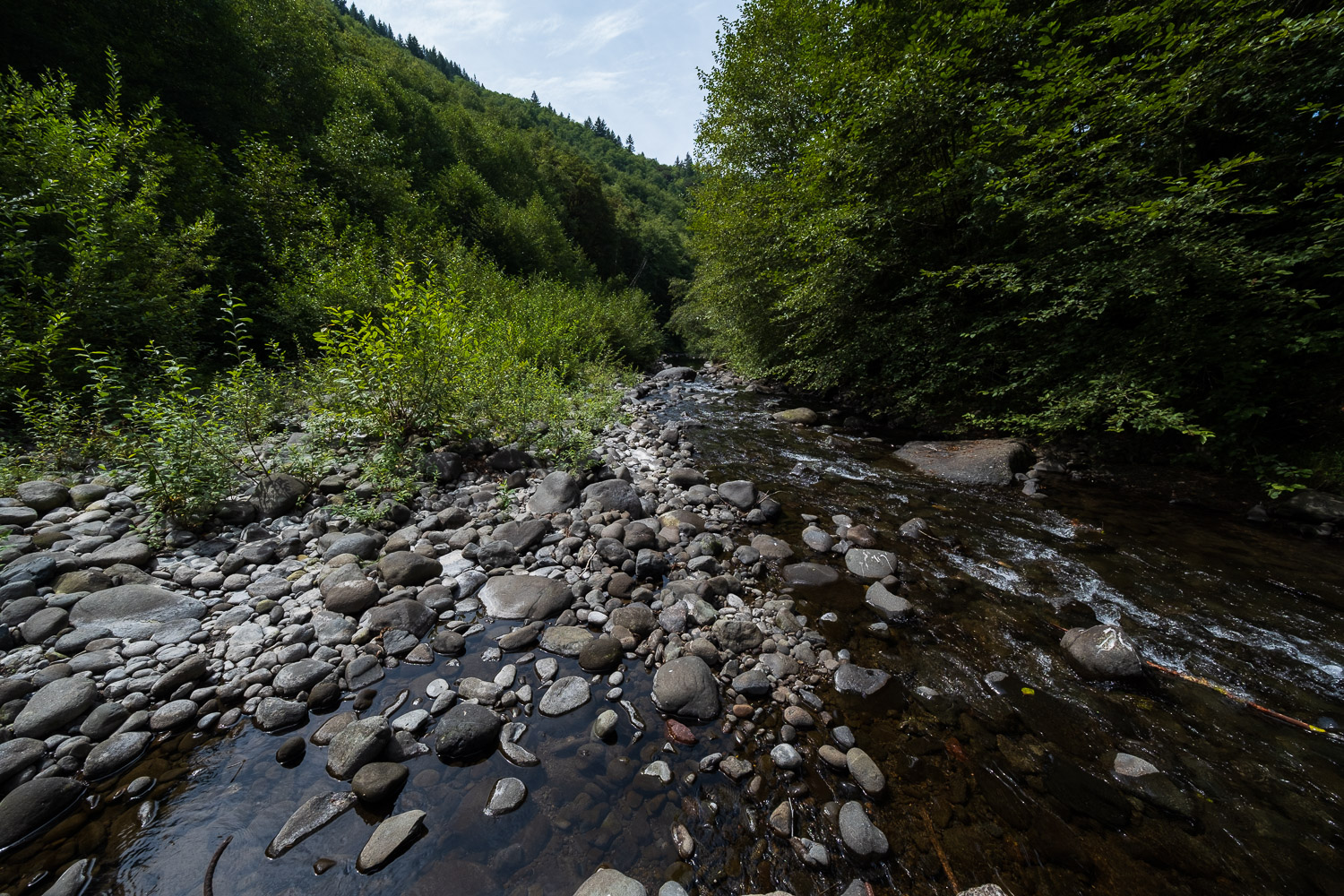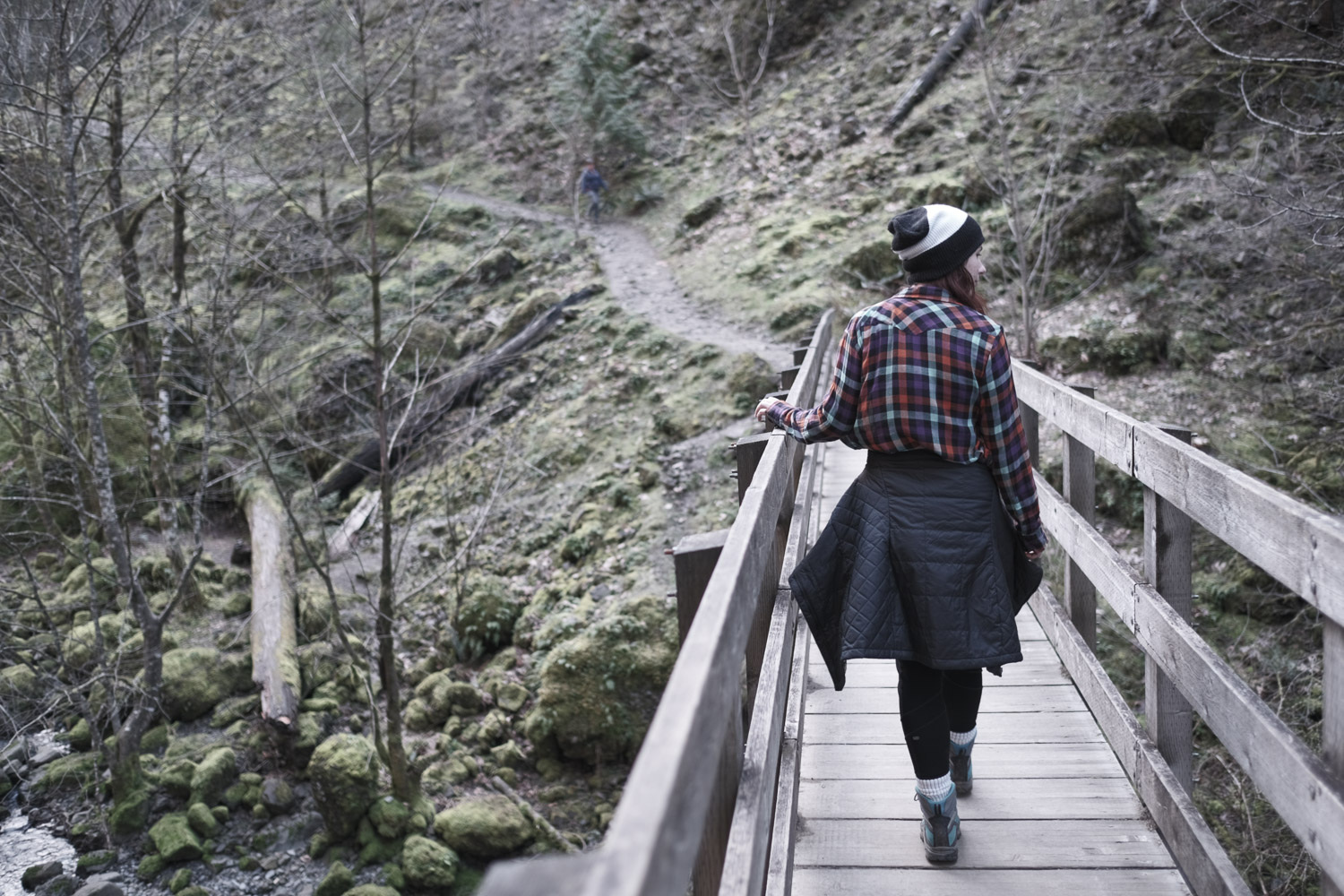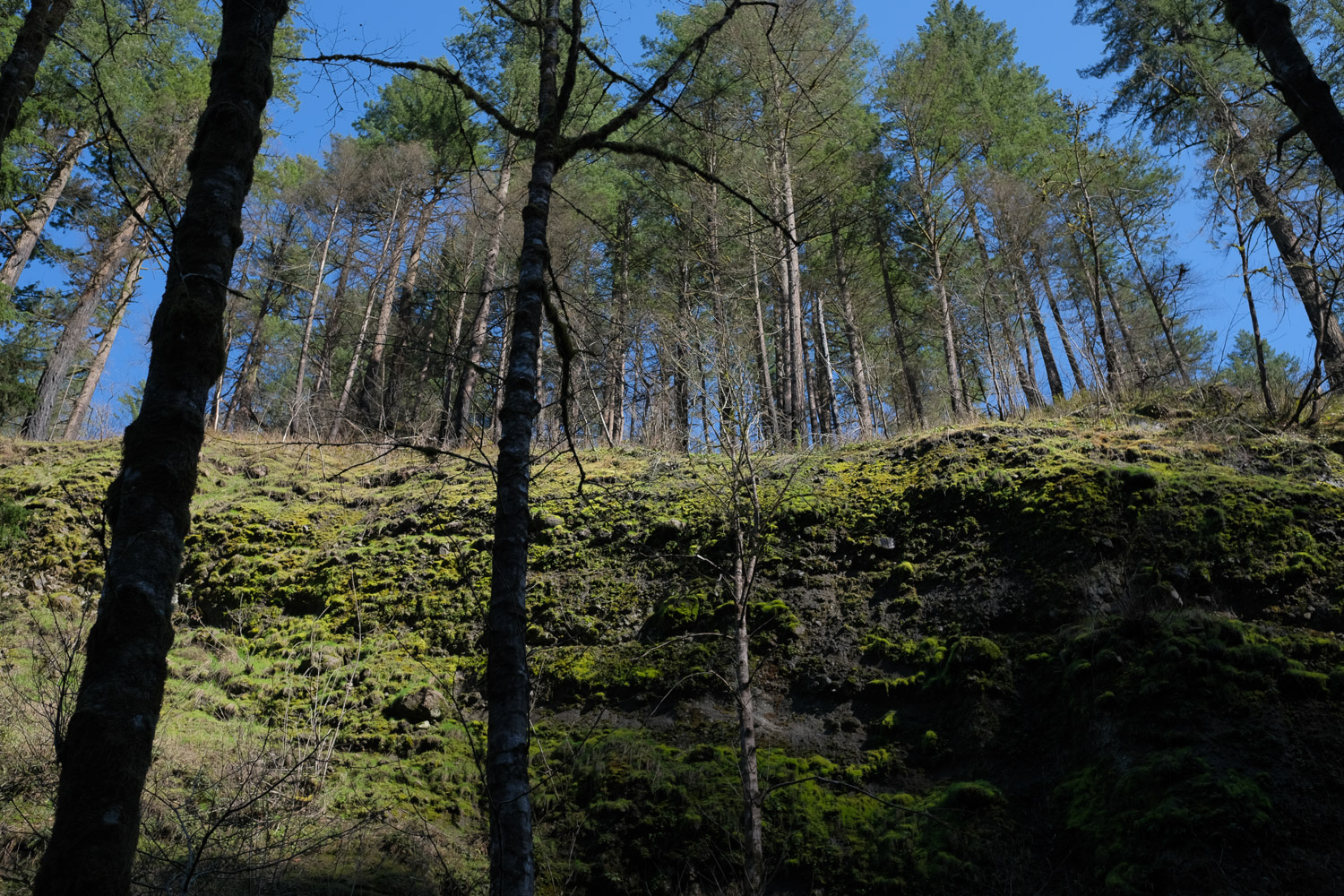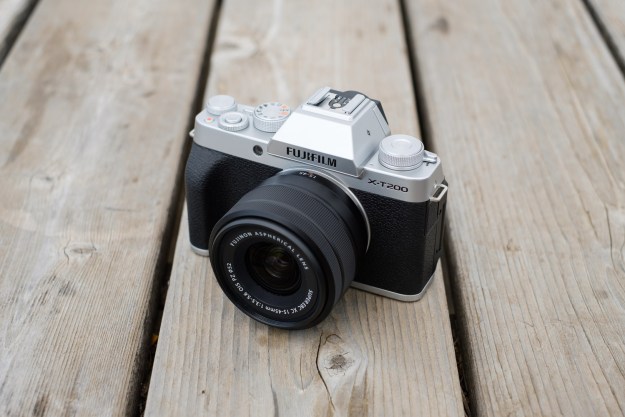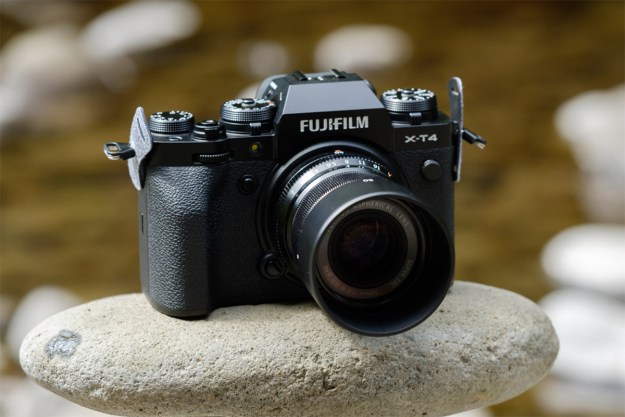
“It may be priced alongside full-frame cameras, but the X-T4 delivers an unmatched shooting experience.”
- 5-axis stabilization
- Fully articulating screen
- Impressive low-light AF
- 600-shot battery
- 15-fps mechanical shutter
- One nagging control issue
- Small, low-res LCD screen
When the Fujifilm X-T4 was unveiled in February, I thought we might finally have the perfect camera. It looked to remedy every issue I raised with previous X-T flagships by adding in-body image stabilization, a fully articulating screen, and (finally!) a higher-capacity battery. Would there be nothing left to list under the cons section?
Not so fast. The improvements are excellent, but a few small quirks remain, one of which caused my camera to simply stop working at a crucial moment during a wedding shoot. At $1,700, the X-T4 is also a more expensive camera than any previous X-T flagship — if cheaper than the Fujifilm X-H1 — putting it closer to full-frame territory.
All of this is to say, the “perfect camera” remains elusive. But don’t despair, Fujifilm fans. The X-T4 is still a class-defining model and one of the most refined and feature-complete cameras at any price.
Design and handling
Despite adding a gimbaled sensor and a larger battery, the X-T4 gains less than 3 ounces over the X-T3 and is still a lightweight at 21.4 ounces with memory card and battery loaded. I shot the camera side by side with my personal X-T2, and while it felt more robust, the extra weight did not compromise the classic Fujifilm shooting experience. That’s good news for Fujifilm’s core demographic of street photographers, although upgrading to the X-T4 isn’t expressly necessary for such customers.

Additionally, the small inconsistencies in the fit and finish I noticed in my initial hands-on with a pre-production camera have completely vanished from this production model. The materials and controls all feel excellent, with just the right amount of resistance in the dials. Fujifilm continues to deliver the most satisfying tactile feedback in the camera industry, and it’s a big reason its cameras are so beloved — even if they have some usability quirks.
The drive mode dial has always been the point of confusion in the X-T line, with icons arranged in an almost nonsensical series. The X-T4 offers one big improvement: The movie mode position has been removed from the drive dial. Instead, you’ll find a new movie/still switch nested under the shutter speed dial. This is a great change, but the old drive mode dial is still imperfect.

For whatever reason, the first position on the dial is not the expected single-shot mode. Instead, it’s where you’ll find high dynamic range (HDR). On multiple occasions, I accidentally switched to HDR mode, which I would frustratingly only notice after snapping a photo, wondering why it took so long to process. I missed several shots because of this.

Am I nitpicking? Yes, but this was a real problem during a wedding shoot where I didn’t have time to notice the drive mode had been changed until it was too late — and it happened several times (For the life of me, I can’t figure out exactly how it kept happening, unless I was accidentally rotating it while adjusting the ISO dial, which is on top of the drive dial).
The LCD screen also leaves much to be desired. While I appreciate that it now fully articulates, it’s still the same 3-inch, 1.62 million-dot panel as the X-T3. It’s behind the times, and noticeably lesser compared to the beautiful, 3.5-inch, 2.78 million-dot screen of the much cheaper Fujifilm X-T200. Sure, there are some constraints on how much larger it could be given the amount of real estate the X-T series dedicates to physical controls, but there is definitely room to shrink the bezels and increase pixel density.
The electronic viewfinder (EVF) is also unchanged over the X-T3, but the 3.69 million-dot resolution still outclasses the Sony A6600’s finder and even the full-frame A7 III’s, both of which have 2.36 million pixels. Several different “boost” modes alter performance to either improve visibility in low light, increase detail, or change the refresh rate, which ranges from 30 frames per second in economy mode to 100 fps in frame rate boost mode.

This also affects battery life. In economy mode, the X-T4’s new battery is CIPA-rated for 600 exposures, a significant jump over the X-T3’s 390. Even in boost modes, battery life doesn’t drop below 450 shots. However, over two batteries, I shot 1,800 photos in boost mode — and most of those were on the first battery. So as always, real-life performance can easily exceed official ratings.
However, an external battery charger is not included and the camera instead charges over USB-C. This probably won’t affect the casual photographer, but it’s a bit awkward for a camera that appeals to enthusiasts and pros who often need to charge one battery while shooting with another.
I can’t fault Fujifilm too much for this one, though. It was likely a decision made to keep the cost of the camera as low as possible. The X-T4 launched at $300 less than the Fujifilm X-H1, yet is a better camera in every way except for the lack of a top LCD display. And for those who need it, an optional dual-battery wall charger is available for $70.
Still photo experience
Beyond IBIS and the new battery, there are a couple of other improvements the X-T4 brings for the still photographer. The shutter is much more durable, rated for 300,000 exposures, double that of the X-T3. It can also shoot in continuous mode at 15 frames per second, an impressive feat for a mechanical shutter, matched only by much costlier, professional sports cameras (Electronic shutter performance is unchanged at 20 fps or 30 in cropped Sports Finder mode).

What really struck me was just how whisper-quiet the shutter is. While you can still use the electronic shutter for a truly silent experience, it might not be necessary anymore.
As the X-T4 uses the same 26-megapixel X-Trans sensor and X Processor 4 image processor, there is nothing new to say about RAW image quality. It’s very good, although high ISO shots are certainly noisier than those from the best full-frame cameras.
However, this wouldn’t be a new Fujifilm camera without a new film simulation, and the X-T4 gives us Eterna Bleach Bypass. This is based on the Eterna simulation introduced with the X-H1 (which I really liked), but mimics the film development technique known as bleach bypass. It makes a low-saturation, high-contrast image that won’t be a look everyone enjoys, but it’s a unique in-camera effect that fits some subjects and moods.

The bigger contributor to image quality, though, is the IBIS system. Rated for 6.5 stops of shake reduction, it allows for much slower shutter speeds to be used while hand-holding the camera. Beyond ensuring sharper results, in some cases, it can also reduce noise as you can opt for a slower shutter speed instead of raising the ISO. I was able to shoot down to 1/8 second with a 50mm non-stabilized lens and still get sharp results. Of course, if you’re photographing a moving subject, you’ll have a limit on the slowest shutter speed you can use to freeze motion.
As with the X-H1, I would recommend setting stabilization to “continuous” mode. This keeps IBIS constantly active, which stabilizes the image preview and helps you get perfect framing. This is especially important for telephoto and macro photography. Otherwise, IBIS only activates the moment you take a picture — this might save some battery life, but you’ll get a shaky preview image.
If there’s one thing I would have loved to have seen from the X-T4’s IBIS, it’s a high-resolution mode. I’m not an engineer, but my guess is that the complex pixel arrangement of X-Trans sensors would make it difficult to employ the same pixel-shift technique used by cameras with standard Bayer sensors, like those from Olympus and Panasonic.
Autofocus performance is Fujifilm’s best yet, and often impressively fast, although this depends on the lens being used, with older lenses performing noticeably worse. I’m not sure why, but zone focusing seemed to be even faster than single-point, and proved the most successful mode for photographing a dark dance floor. In fact, I was genuinely impressed with how good the X-T4 was with regard to low light autofocus. Fujifilm claims sensitivity down to -6 EV, which is pretty incredible, and I believe it.
Face and eye tracking is generally accurate but remains an area where Fujifilm has room to improve. It’s not quite as sensitive as Sony’s and Canon’s latest systems and requires the subject to be larger in the frame before it kicks in. Face detection also struggles in lower light, especially when photographing people with darker skin. Fujifilm also has no specific animal-detection autofocus mode.
Video experience
The Fujifilm X-T4’s video mode is largely the same as the X-T3, recording 10-bit 4K at 60 fps up to 200 megabits per second, or at 30 or 24 fps up to 400Mbps. The one new feature is that Full HD video can now be shot at 240 frames per second, albeit with a crop, for up to 10X slow-motion playback. You’ll get better quality at lower framerates, but it’s a fun option to have.
But the feature that really adds to the video mode is, again, the image stabilization. In an impromptu but extreme test, I recorded a macro shot of a fly that landed on my leg, holding the lens mere inches from it, and the result looked incredibly smooth.
I was also quite impressed with face and eye-tracking during video, even more so than when shooting stills. The X-T4 had no trouble staying locked to my face as I moved throughout a room, and focus transitions were smooth and natural.
On the downside, the removal of the headphone jack feels completely at odds with a camera that has otherwise grown friendlier to videographers. This is something that the X-T3 and even older X-T2 both offered. Beyond the USB adapter that comes in the box, you can also add a regular headphone jack by using the vertical battery grip — but that will run you an extra $330.
In the wake of the Canon EOS R5’s overheating scandal, it’s probably important to point out that the X-T4 is very much still a small, fan-less, hybrid mirrorless camera, not a professional video tool. Video quality is excellent, but if you need a dependable machine that can keep churning out 4K/60 footage in any environment, this is not the camera for you.
In a quick indoor test, the camera easily hit the 20-minute limit for 4K/60 video before the heat warning indicator turned on. I was only able to record about one minute into the next clip before the camera shut down for overheating. I’ve seen other tests that put this time limit much lower, like when shooting under direct sunlight.
If you don’t need 60 fps, you should get much more record time. Even after the camera shut down from overheating, I switched to 4K/24 and was able to immediately record another 20 minutes. The camera remained warm to the touch during this time. (Note: in both 4K/60 or any 400Mbps mode, clips are limited to about 20 minutes as an apparent precaution against overheating. At 30 fps and 200Mbps, clips are limited to the standard 29 minutes, 59 seconds.)
So it may not be a cinema camera replacement, but the X-T4 is still one of the top mirrorless cameras you can buy for video. Quality is impressive, and there are numerous advanced features including all-intra compression, Eterna and F-log profiles, true 24p and 180-degree-equivalent shutter speeds, and 4:2:2 10-bit HDMI output (the internal 10-bit recording is 4:2:0).
Full frame numbers
I have another nitpicking concern to raise. In the middle of shooting the “first look” at a wedding, the X-T4 just stopped. “Frame number full,” it told me. I thought it was a glitch. I turned the camera off and on, but the problem persisted.
Fortunately, I had a second camera on me, otherwise, I would have been dead in the water at a critical moment.
Turns out, this isn’t a glitch — it’s simply the result of Fujifilm’s file-numbering system. The camera counts up to 9,999 exposures before it has to reset the counter. When it does so, it starts a new folder. The folders start at number 100 and go up by one until maxing out at 999. This means you should get 899 folders of 9,999 images each before encountering the “frame number full” error. That’s 8,989,101 photos. So, like, this shouldn’t be a problem. Ever.
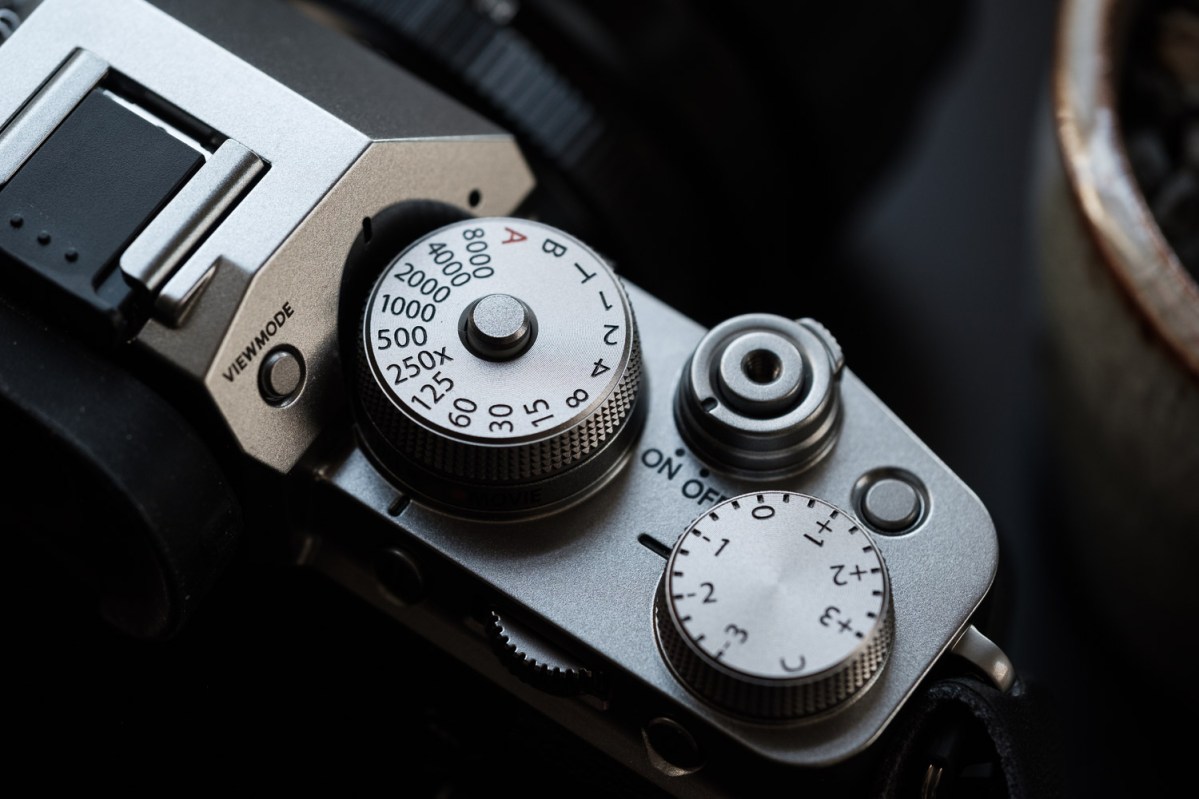
However, as Fujifilm later explained to me, the camera can be tricked if a memory card is inserted that already has a high-numbered folder on it. Seeing as this was a press camera passed around among multiple reviewers, all of whom would have been using memory cards that had been in other cameras, I can see how this happened.
Most photographers will never run into this issue, but a cursory google search revealed several forum posts and at least one YouTube video on the topic; so it does happen. This is something that seems easily fixable, but the behavior has been around since at least the X-T1. Why doesn’t the camera just check the card for which folders are present and automatically create a new folder if a name is available? Only if there truly are 999 completely full folders on a card should the camera stop shooting.
While I hope Fujifilm addresses this, there is at least a quick way to check if your camera is about to hit the frame number limit: Snap a picture, play it back, and look at the number in the upper right corner. If the prefix is 999, begin panicking. (Or just follow the steps in the manual to reset it, but note that this does involve formatting a card.)
And full-frame numbers
At $1,700, the Fujifilm X-T4 forces a comparison to full-frame cameras. The excellent Nikon Z 6, which is under $1,800 at the time of writing, will offer better low-light image quality and comparable 5-axis stabilization (as will the even cheaper new Nikon Z 5). The Sony A7 III brings a similar spec sheet, plus the addition of Sony’s excellent Real-Time Eye AF, for just under $2,000.
However, neither of those cameras match X-T4’s speed nor its video capabilities. They are also larger and heavier, especially once you take bulkier full-frame lenses into account.
There’s a perception that exists in customers’ minds about full-frame. It’s seen as the true photographer’s format, while smaller sensors are somehow lesser. I think the reality is different from such perceptions, but the perception still exists. Spending close to $2,000 on a camera that isn’t full-frame rubs some people the wrong way, and I think that may relegate the X-T4 to niche status.
I hope I’m wrong about that. After spending a few weeks with this camera, including a 10-hour wedding shoot, I haven’t once been left wanting for a larger sensor.
Our take
We’re still left without the perfect camera, but I have no problem calling the Fujifilm X-T4 the best camera you can buy, thanks to its balanced feature set and overall commendable performance.
What I really appreciate is that despite all the tech, new features, and faster performance, the X-T4 hasn’t forgotten its history. It’s still a class act, elegantly designed for the photography enthusiast with an attention to detail rivaled only by Leica. You don’t just shoot it for the results, but for the joy of the experience.
Is there a better alternative?
The Sony A6600 is another great APS-C camera, one that happens to be cheaper at about $1,400 for the body. It’s a lot of camera for the money, but the X-T4 still comes out ahead in several areas, including burst shooting, video quality, shutter speed range, and EVF resolution.
But the X-T4’s strongest competitor may come from its own team. Right now, the Fujifilm X-T3 is just $999 thanks to a manufacturer rebate. It’s still a fantastic camera, and a steal at that price, if you don’t need IBIS, 15-fps continuous shooting, or a fully-articulating screen.
How long will it last?
The X-T4 is a finely crafted, weather-sealed machine that should easily last for years, especially given the new shutter rated for 300,000 exposures. What I’m less sure about is when we’ll see a replacement. The X-T3 is about to turn 2 years old, which is generally when we expect a new model. With the X-T4 having been announced just six months ago, it complicates things. The X-H2 is also still rumored to be in development. It may not be too long before Fujifilm one-ups itself again.
Should you buy it?
Yes. Even with a couple remaining nagging imperfections, I’ve never enjoyed shooting a camera more than the Fujifilm X-T4.
Editors' Recommendations
- Fujifilm’s most-hyped camera has just started shipping
- iPhone in space: SpaceX crew shares Earth image shot on Apple’s handset
- Fujifilm X-T4 vs. Fujifilm X-Pro3: A difference in form and function
- Sony’s A7S III is the ultimate 4K video camera, five years in the making
- Fujfilm X-T200 vs. Fujifilm X-T30: A close call

